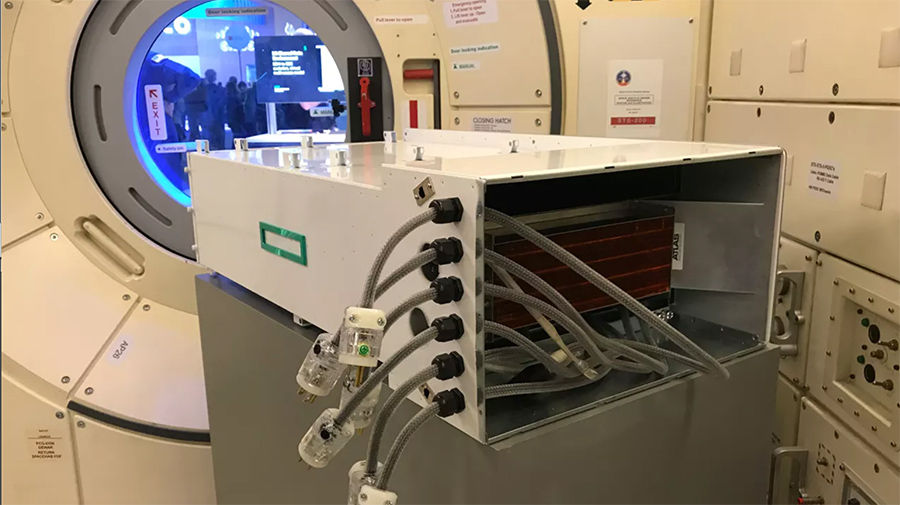Products You May Like
SAN FRANCISCO — Hewlett Packard Enterprise is preparing to send a second-generation Spaceborne Computer to the International Space Station later this month.
The Spaceborne Computer-2 will be linked to Microsoft’s Azure cloud through NASA and HPE ground stations, meaning the space station will have far more data processing power and better connections with Earth than ever before, HPE and Microsoft announced Feb. 11.
“Astronauts and space explorers deserve access to the best cloud computing technologies and advanced processing at the ultimate edge,” according to the news release. “Sometimes analysis needs to be done immediately at the edge where every passing moment counts, and other times the analysis is so massively complex that it can only be performed with the power of the hyperscale cloud.”
The first HPE Spaceborne Computer, a proof of concept, traveled to ISS in 2017 and back to Earth in 2019.
The new computer is designed to give ISS astronauts the type of technologies organizations on Earth rely on to process data. It will eliminate the need to transfer “data to and from Earth, which requires a lot of bandwidth and time,” according to the news release.
“HPE and Microsoft are collaborating to further accelerate space exploration by delivering state-of-the art technologies to tackle a range of data processing needs while in orbit,” Mark Fernandez, HPE Spaceborne Computer-2 principal investigator, said in a statement. “By bringing together HPE’s Spaceborne Computer-2, which is based on the HPE Edgeline Converged Edge system for advanced edge computing and AI capabilities, with Microsoft Azure to connect to the cloud, we are enabling space explorers to seamlessly transmit large data sets to and from Earth and benefit from an edge-to-cloud experience.”
On February 20, HPE’s Spaceborne Computer-2 is scheduled to travel to the ISS on the 15th Northrop Grumman cargo resupply mission. The ISS National Lab plans to sponsor Spaceborne Computer-2 research over the next two to three years.
